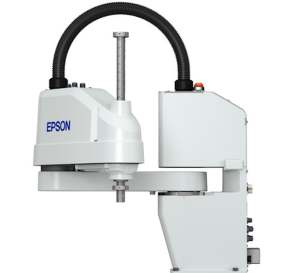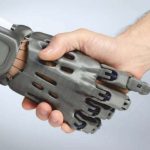The global medical robotic systems market size was valued at $2257.8 million in 2018 and is projected to reach $10710.6 million by 2026, exhibiting a CAGR of 21.5% during the forecast period, according to fortune business insights
The idea of robots in improving healthcare is not new. It started as early as 1985 when there was a plan to transform industrial robots into precision machines for surgery and beyond.
But no matter how impressive, robotics in healthcare, it is still a system controlled by humans. The real magic of the 21st-century robo-doctor will come from artificial intelligence systems that can learn so much that it will outperform the best doctors by combining all the available knowledge in all medical repositories. However, most experts agree that AI will not replace trained medical staff, just make them more efficient in several areas in healthcare.
The global medical robotic systems market size was valued at $2257.8 million in 2018 and is projected to reach $10710.6 million by 2026, exhibiting a CAGR of 21.5% during the forecast period, according to fortune business insights.
 The UAE’s government-led visions are positioning the country as a global leader in smart technology, and especially in robotics. For example, the UAE government recently announced a Ministry of Industry and Advanced Technology.
The UAE’s government-led visions are positioning the country as a global leader in smart technology, and especially in robotics. For example, the UAE government recently announced a Ministry of Industry and Advanced Technology.
This new government ministry complements the UAE’s existing nationwide innovation agendas. For example, the UAE has the Ministry of State for Artificial Intelligence with its Strategy for AI to boost government performance, the Strategy for the Fourth Industrial Revolution, and the National innovation Strategy to make the UAE one of the world’s most innovative countries including in healthcare.
Ayesha Rashid from Mediworldme spoke to Neil Colquhoun, Vice President – CISMEA and Professional Displays, Epson via an email interview about the role automated robotics play in the healthcare industry.
What role do automated robotics play in supporting and reshoring local manufacturing in the medical industry? How can they enable enhanced production of medicines and personal protective gear?
When global supply chains were affected as a result of the current situation, the need for countries to consider reshoring has become an important topic of conversation. The medical industry in particular has been highlighted because, if personal protective equipment and medication were produced locally, the supply chain could be controlled domestically with production and delivery adapted more easily.
As existing factories expand and new factories are constructed, owners should look to automated robotics to enhance efficiency, productivity and costs. This is especially the case for medication and personal protective equipment – which need rapid and repetitive production.
Automated robotics can do these kinds of repetitive tasks faster and more effectively than people, and in turn open up new jobs, upskilling existing factory workers in programing and other advanced job roles.
Productions in the pharmaceutical industry, in particular, are often characterized by being dynamic and agile. In-house transports are constantly taking place: semi-finished goods move from warehouse to production lines; finished goods from production lines to warehouse, and items between departments. Skilled workers spend much of their day just moving parts from A to B, and usually they must interrupt their actual work to do it. This leads to unnecessary standstill on their machines, which means a great loss of efficiency. Where do robots come in this?
We agree that the ‘dynamic’ method as described above where goods or parts have to be moved can often lead to interruptions in production resulting in costly downtime. Instead manufacturers can optimize their businesses by setting up automated production lines and well-managed transportation and logistics. For example, the medical and pharmaceuticals industry can take learnings from the automotive sector, which fully automated its production lines decades ago. Now, the automotive industry can deliver ‘just in time’ components and parts. Local production of ‘just in time’ medical supplies can help manufacturers and customers to reduce the amount of goods stored and to optimize costs.
Manufacturers can deliver continuous and more effective work by using more integrated automation in assembly lines and processes, and having specialized people or equipment take on supplying parts and shipping goods. Manufacturers can also automate and optimize how they manage the specialized logistics process.
One of the additional business benefits of flexible production is in producing ‘on demand’ or small batches of products, whenever they are needed. Instead of large quantities of goods sitting in warehouses for long periods of time, Middle East manufacturers can optimize the amount of medical equipment or medication that they store in warehouses, and ship out only when they are needed –saving warehouse space and costs, and optimizing transportation time.
To succeed, manufacturers need to use their resources efficiently and design reliable operational processes that support their production. Autonomous mobile robots (AMRs) are frequently used precisely for this purpose, as the dynamic and flexible technology enables companies to automate their internal material transportation in an efficient and cost-effective way. Your opinion on this?
In the near future, the Middle East is set to adopt smaller and localized production facilities connected through the Internet of Things. Companies can be better positioned to react to short-term demands of specific products, and in turn share production slots across different factories. The Internet of Things and Industry 4.0 can also enable more sophisticated production and logistics.
Companies should separate tasks like production, parts feeding, product movements, etc. and use the best specialized ‘force’ for each task. Manufacturers can take a three-pronged approach: 1) Highly-flexible robots and automated production, 2) Well-managed logistics systems using Autonomous Mobile Robots (AMRs) and Automated Guided Vehicles (AGVs) for the parts and product movements and warehousing, and 3) Production planning with a capacity to react to short-term changes and demands.
Epson today supports production innovation with a wide portfolio of high-speed and high precision robotics. For example, we recently launched our first DC version of a Six-axis robot (VT6-L DC), which can be directly mounted on a mobile robot platform driven by the DC power supply of typical AMRs. This Six-axis robot can help companies to save space and weight by eliminating normally needed power converters. For the logistics part, Epson is currently developing special compact kinematics.
Is it possible that humans and robots will be working side by side in the future? Or will robots take over the pharma production industry completely?
Industry experts and futurists predict that workplaces will exist where robots and people work in cohesion in what some call ‘co-working robots’ or ‘co-bots’.
While robotic skills have advanced greatly, robotic solutions cannot do everything for a manufacturer that a person could do. By introducing robots into production lines, robots can take on repetitive or dangerous tasks, freeing up valuable human resources. This means that workforces can be upskilled and retrained to take on potentially higher paid and higher skilled roles.
How does Epson foster the Middle East’s smart robotics future?
We are investing in the Middle East as a growth market, aligned with national transformation agendas, increasing our local head count, and supporting the workforce. We are partnering with Middlesex University Dubai on its Robotics Laboratory and supporting its MS in Robotics.
Epson brings more than 35 years of experience as one of the world’s leading robotics companies, with a total portfolio of more than 400 different types of robot in the Middle East, including the Epson T3 SCARA Robots, the VT6-L 6 axis highly compact production robot, the Epson Parts Feeder series, and the flexible and compact C4 6-Axis that can be used for blood sample handling to medical instruments.
We also offer Wearable and Industrial products that can support remote servicing and increased production. For example, in Augmented Reality, our Moverio BT-300 smart glasses provide superior transparency and a high-resolution camera for seamless digital content integration with the outside world.
Can you tell us in detail about your T3 SCARA Robots?
Epson’s T3-Series is the compact and versatile entry-level model in our comprehensive SCARA product range. The T3-Series has affordable and easy-to-set-up automation, with a USD 8,500 starting point.
Our T3 SCARA robots are ideal for simple pick-and-place applications and in areas where linear systems were previously used. Key features include:
- Affordability with great value for money without compromising on performance
- Excellent accuracy with repeatability of 0.02mm that is ideal for pick-and-place tasks
- High customizability that supports image-processing, external software, and custom user interface
- Fully integrated with complete Epson solutions including robot controller and software
- Versatility and flexibility that makes them an ideal solution for applications from automotive to pharmaceutical.
What makes them so unique in the industry?
Epson’s T3-Series industry-leading features include:
- Compact high performance — A powerful four-axis robot with integrated controller and diverse connection possibilities, capable of payloads up to 3kg and a standard cycle time of 0.54 seconds. The Epson T3 series also supports image-processing, integration of external software and the option to design a custom user interface.
- Outstanding versatility — SCARA T3-Series robots are used in a huge range of industries, from assembling automotive components, mobile phones and computer parts, to creating medical equipment and packaging medications, not to mention lab automation and scientific analysis.
- Accuracy to can count on — T3-Series robots offer a repeatability of just 0.02 mm, making them ideal for simple pick-and-place applications, part feeding, positioning and inspection tasks, assembly tasks, including those supported by the Epson Vision System, as well as material coating at moderate speed.
Why now is the best time for the region’s manufacturers to adopt advanced robotics to drive innovation and support business continuity in the pharma industry?
While the current situation presents unique challenges to many Middle East countries, there are also many opportunities for the public and private sectors to advance digital transformation and investment in innovation, especially in the robotics and pharmaceutical manufacturing sectors.
Organizations that can embrace digital transformation and automation could emerge more resilient and more competitive in the ’new normal’ era. Robotics automation is especially vital in the pharmaceuticals industry, where medication is required to be produced in mass quantities in short periods of time.
What do you think could be the future of pharma engineering in the age of robots?
With some of the tightest tolerance requirements, government testing requirements, and medical system certifications, the medical and pharmaceutical industry has high manufacturing standards.
Robots have been very popular with leading medical manufacturers, and are used to build products such as contact lenses, dental instruments, hearing aids, and pacemakers. Epson Robots have helped many world-class medical, pharmaceutical, and lab automation companies to build top level automation systems for a wide range of applications. From dental instruments to pacemaker assembly to blood handling, robotics can be involved in a broad range of mission critical high-performance applications.
















